|
Occasionally you may see photos of me working with my bees without safety gear. Most beekeepers wear a veil and jacket to keep from getting stung. But I believe the best thing to keep you safe is knowing what to expect. The best thing to keep you safe is knowing what to expect.
The more you know about what to expect the better prepared you can bee to work with bees. I know that some days I am fine without gloves and a Jacket but there may be other days that I need them. I am not more brave than my beekeeper friends wearing full suits, but I do think that this year I have been blessed with a calmer colony of bees. I am always prepared and have water, gloves, a jacket, veil and allergy medication on hand just in case. Yesterday I was walking back to my car after working with the bees and one got stuck in my hair. I tried my best to help her out while staying calm, but I got stung anyway. I am sure if I got lost in a head of hair I would be scared, frustrated, and ready to sting whatever was trapping me. I am not mad, but a little sad for that little stuck bee. As soon as I was stung, a friend helped me pull the stinger out. Because it was pulled out so fast, It wasn't as painful as my last sting.
0 Comments
Days 1-2 After emerging from their capped cell they get some pollen to eat then get to work cleaning their room, I mean cell. They also work to keep the brood warm. You can see lots of capped brood almost ready to emerge. Days 3-11 These young bees are called Nurse Bees, because they take care of feeding the larva. Days 3-5 they feed the older larva and days 6-11 they feed the youngest larva. Days 12-17On day 10 bees develop wax producing glands on their abdomen. Researchers still don't know exactly how it works, but I think it is a little like ear wax. At this age the bees are eating lots of honey to convert to wax. For every 6 pounds of honey they eat (as a group), they produce 1 pound of wax. They use this wax to build the comb. The comb wax is cream colored when it is new or freshly built. During days 10-16, bees are best at producing wax as they get older they produce less wax. So during days 12-17 they are making wax and building comb. They also carry food to store in the cells and perform undertaker duties. An undertaker is someone who takes care of the dead. As a bee they take any dead bees out of the hive. Days 18-21During this time, a bees stinger is at maximum potency. That means it has some really strong venom. Since they have the strongest stingers they work as guard bees. A guard bee inspects every bee that enters the hive. They can smell the bee and tell if they are from this hive or another. If a bee from another hive comes to the door with pollen or nectar the guards won't stop them. It's like they are bringing gifts. If a honey bee from another hive comes with nothing the guards won't let them enter. If a wasp, bumble bee, or yellow jacket tries to enter the guard bees will not let them in either. They will release a pheromone or a smell to warn the others. It works a lot like a fire alarm warning people there may be a fire. Other bees will come out and attack. If they are trying to rob the hive, by stealing their honey, the bees will attack. Days 22-death (40-45)This is when the worker bee begins to forage. They start searching and collecting water, pollen, and nectar. The single bee will travel to many different flowers of the same kind collecting pollen and nectar. They pollinate these flowers when pollen sticks to the hairs on their body and then rubs off onto another flower.
Elijah, who is 5 1/2 sent me a message by using the ask a beekeeper part of this website. I think I have an interesting answer. "Do bees sting each other on the back or something? I was wondering. I know what bees make -- they make honey!" First a few facts:
There are a few bees, called guard bees that stay near the entrance to protect their hive from intruders. They inspect every bee that enters. They can smell the bee and tell if they are from this hive or another. If a bee from another hive comes to the door with pollen or nectar the guards won't stop them. It's like they are bringing gifts. If a honey bee from another hive comes with nothing the guards won't let them enter. Here a a photo of a the entrance on a busy sunny day. As the hive population grows, I may make the entrance larger, but that will mean they will need more guard bees. If a wasp, bumble bee, or yellow jacket tries to enter the guard bees will not let them in either. They will release a pheromone or a smell to warn the others. It works a lot like a fire alarm warning people there may be a fire. Other bees will come out and attack. These insects may have been trying to rob the hive, by stealing their honey, the bees will attack. One day I found a dead Bumble bee in front of my hive. I wonder if he was trying to steal some honey.
It only takes a week to start seeing that the queen is doing her job. Here is a photo of larva and other worker bees taking good care of them. Young bees that take care of larva are called nurse bees. You may have to look closely to see the larva in the comb. Can you find them? February was coming to an end and I was off to a new adventure. My Husband and I headed to the County Extension Office to pick up the wood, frames, and wax to build the hive. When we arrived we saw lines of hives waiting to be picked up by my classmates. Students crowded into a small room to learn how to put the frames together. The frames hold a wax sheet that the bees will use as a foundation for building cells. We needed to insert the wax into the frames and nail down a strip of wood so the wax stays put in the frame. We also learned that we needed to weatherproof our wooden hive by sealing it with paint. This will protect the inside of the hive from moisture. We loaded the car and drove off with the scent of beeswax in the air.
A few weeks later, I finished up with painting. |
AmandaStaring at the dancing bees in an observation hive, it hits me. I love how these tiny creatures communicate. It looks like they're having fun dancing around while telling their sisters where to find some nectar. Amanda's Sting Count
2013- 6 stings 2019- 0 Archives
April 2019
Index
All
|
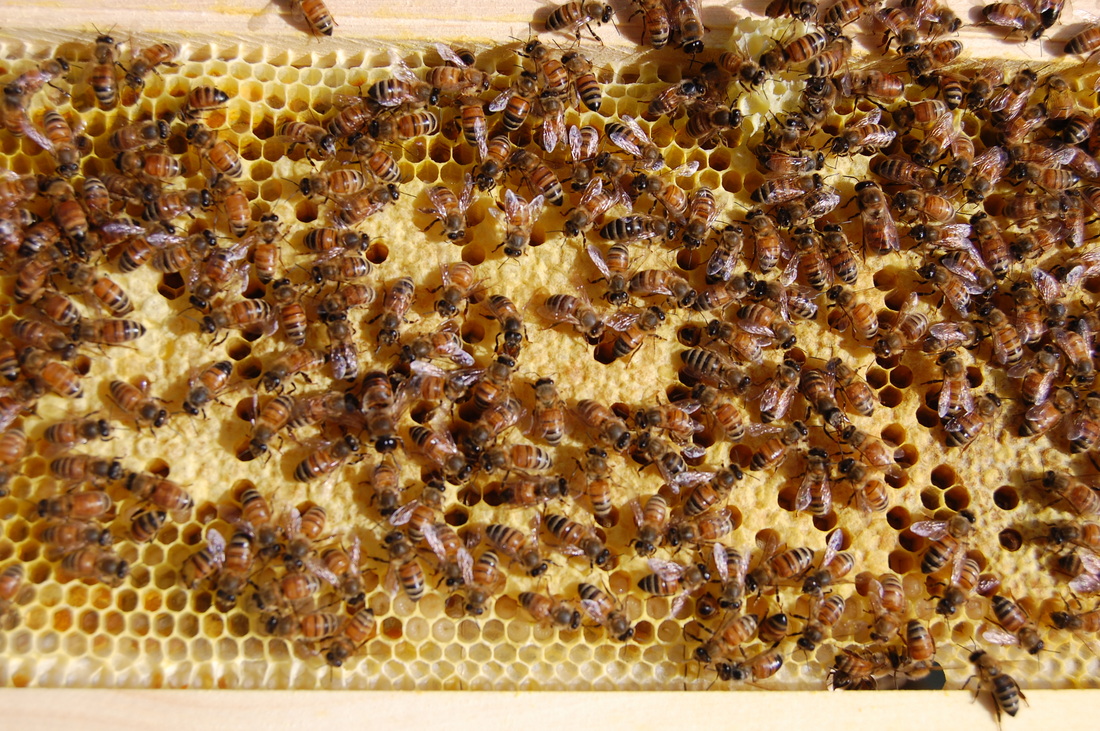
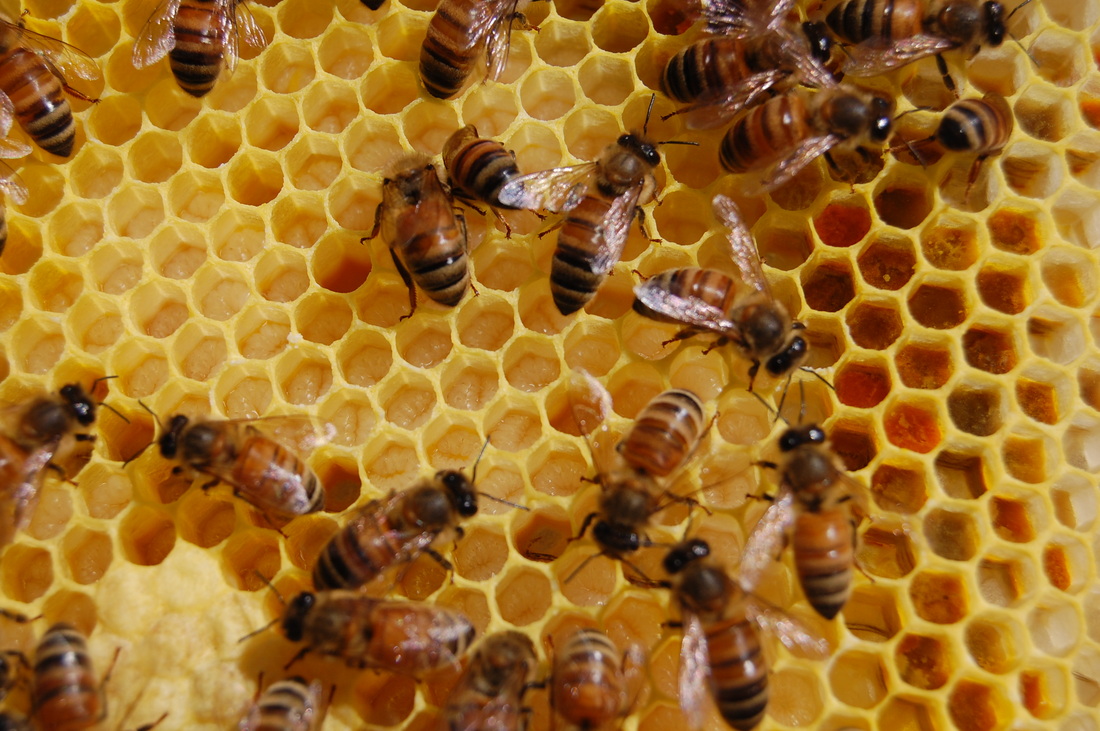
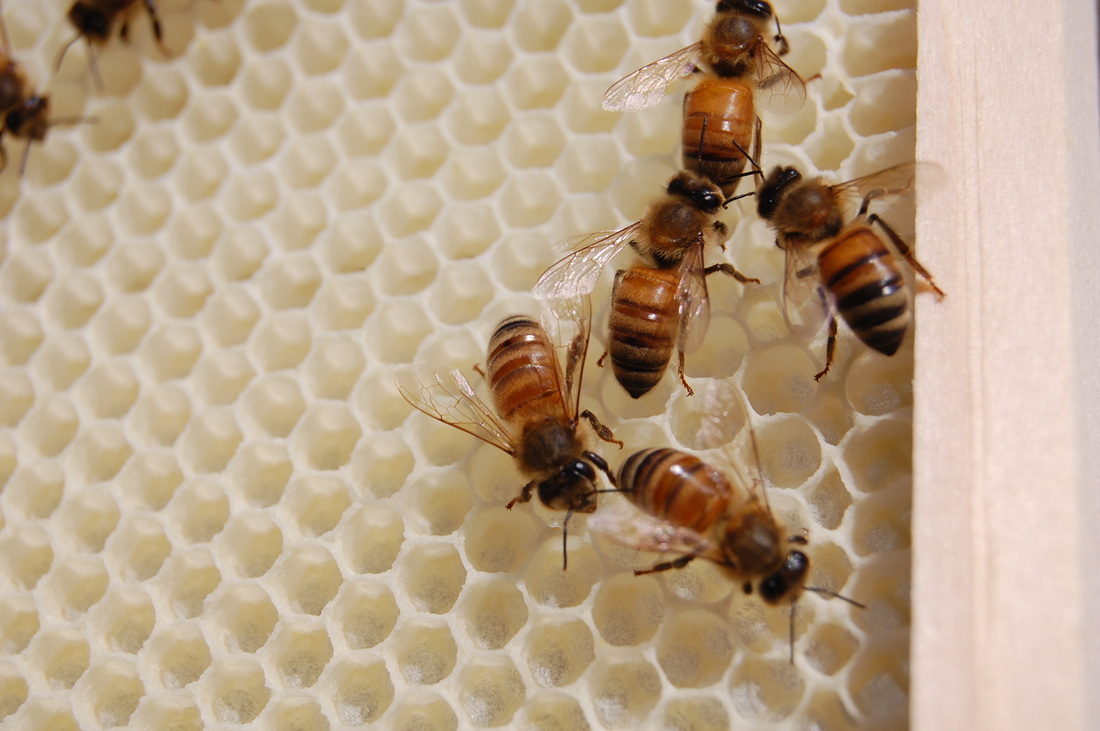
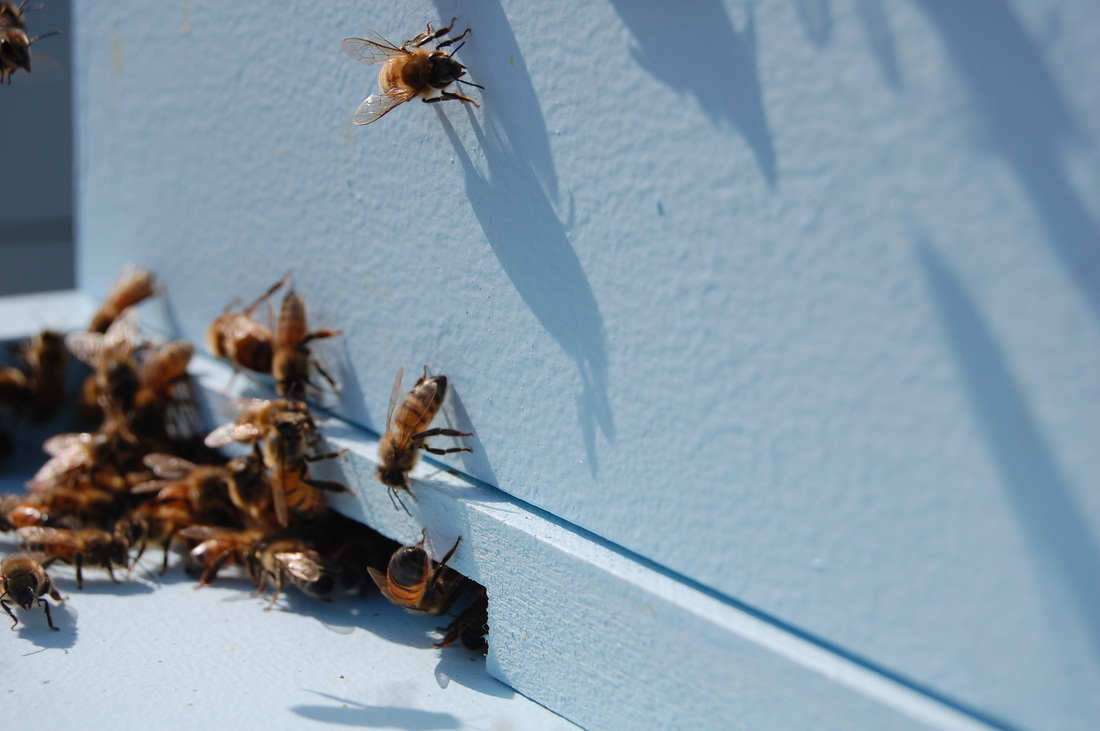
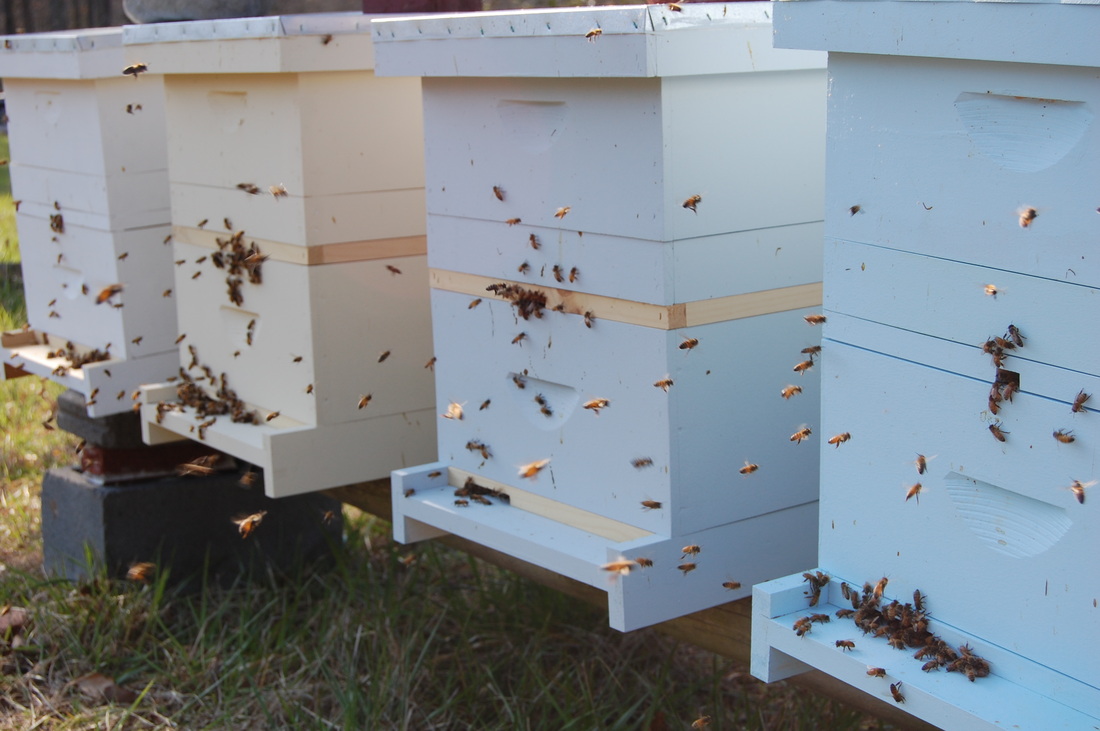
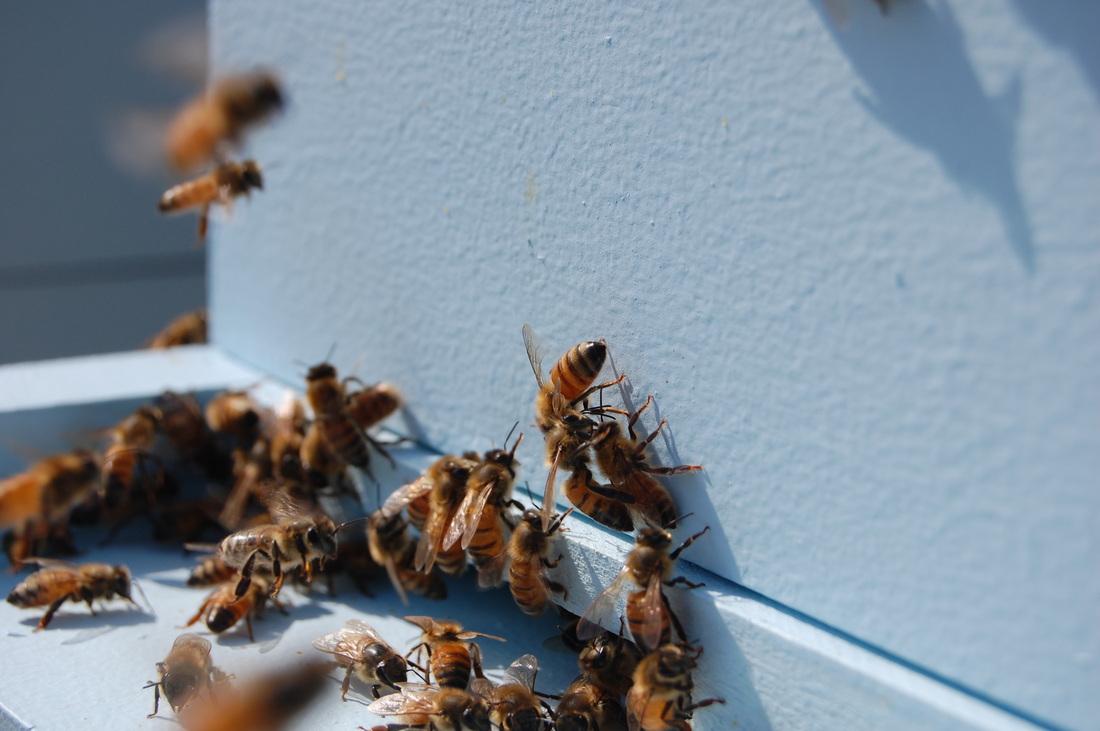
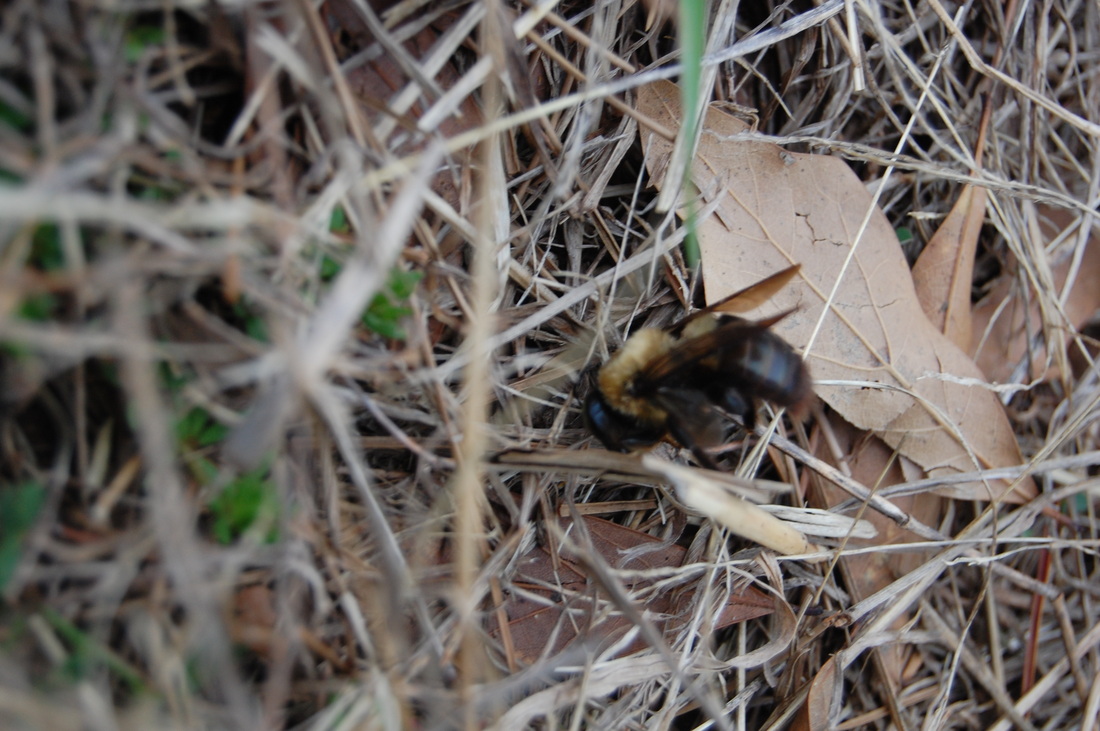


 RSS Feed
RSS Feed
